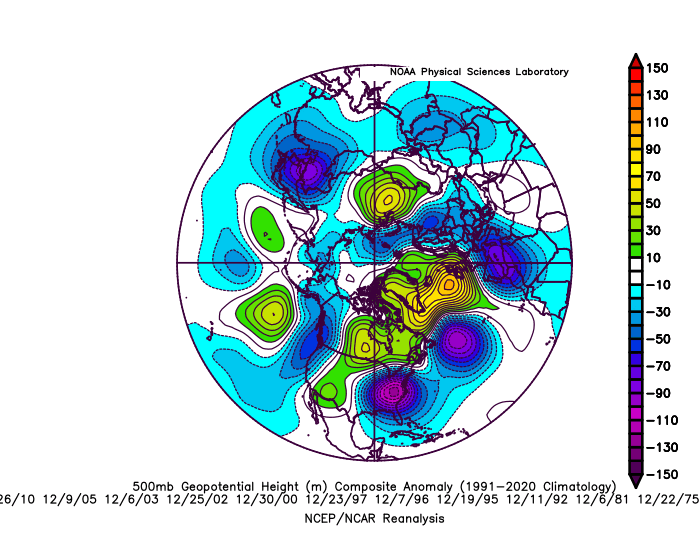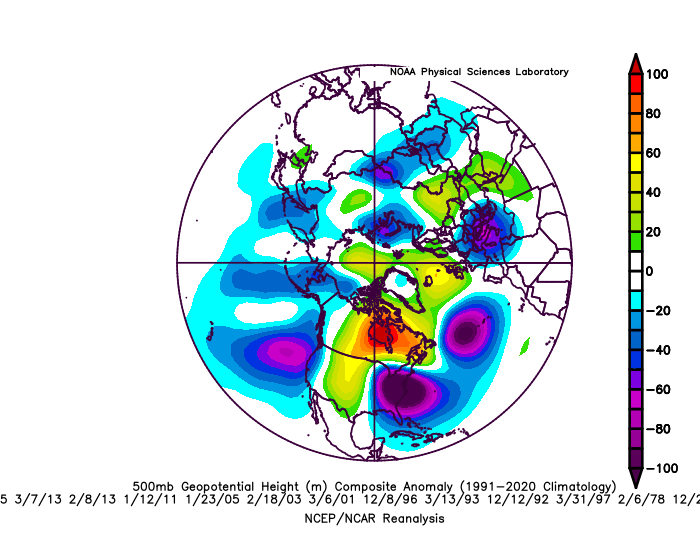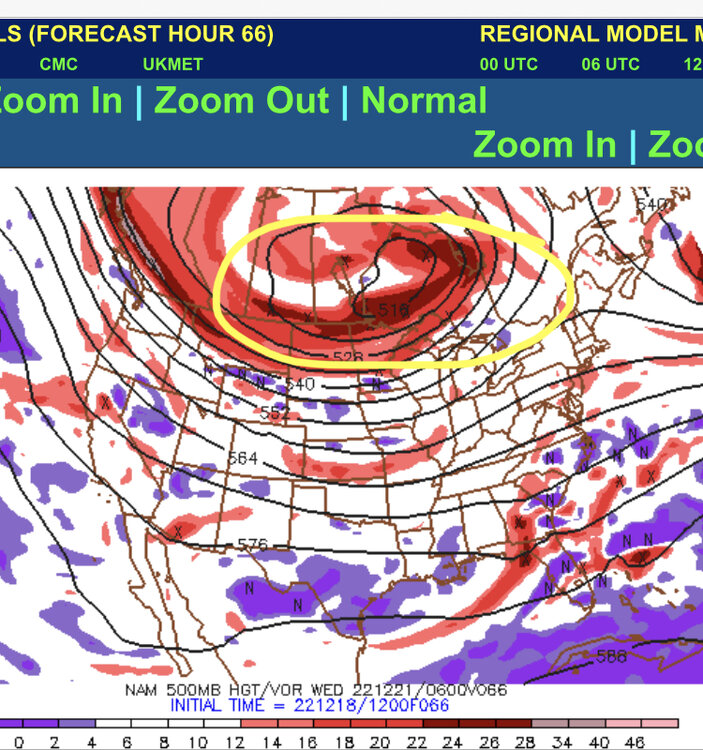-
Posts
90,892 -
Joined
-
Last visited
Content Type
Profiles
Blogs
Forums
American Weather
Media Demo
Store
Gallery
Everything posted by ORH_wxman
-
Here's ORH top December snowfalls.....the Hudson Bay block is pretty consistent across most months. It's one reason I really liked the 12/16 look at one point when it was pushing the whole ULL under us with the big Hudson Block in place.
-
That's also a composite of all months....December is going to look different because wavelengths are a bit different....I'll see what the top December snowfall composite looks like
-
Several of the top NESIS storms missed us or just gave us a glancing blow. That looks idealized for the Mid-Atlantic. That looks pretty suppressive for New England as a whole....maybe not bad for far southern areas. When I redo the composite for top snowfalls at ORH, it def looks a little different.
-
That looks too wrapped up that far west to be a KU....ULL nuclear over Detroit isn't great. On a hemispheric scale, you can see though how close we were to a great look. The longwave pattern there is excellent....but there are never any guarantees to success in favorable longwave patterns.
-
The warmer winters from those years had really crappy patterns for the most part just like our warmest winters now have crappy patterns for the most part. Analogs are very useful. Just don’t take the temps verbatim…which you shouldn’t do anyway in analog forecasting. The anti-analog crowd has never explained how they know what a good or crappy pattern looks like…and if they cannot explain that, then they have zero ability to give an informed opinion.
-
Yeah it’s too early to punt first half of Jan. Post-Xmas looks useless though for now. Most guidance has AK pig retrograding back toward Aleutians in early January which matches some of the tropical stuff so it’s possible we get into a good pattern sometime in early January, but obviously no guarantees.
-
Analogs are really to be used as probabilistic tools. I know most people just have their eyes glaze over at that term but it’s unfortunately the reality of long range forecasting. Check Jan 1969 and Feb 1969. The patterns aren’t all THAT different but the snowfall and sensible wx was extremely different….and those were one month apart…nevermind years or decades. Think of it I’m these terms: 1. pattern is really good…so we have a 40% chance of a decent snow event in the next 7-10 days 2. pattern is kind of mediocre/average. We have a 25% chance of a decent snow event in the next 7-10 days 3. pattern sucks donkey balls. We have prob a 10% chance at a decent snow event over the next 7-10 days. There are no guarantees in any of those statements. But you’d much rather have the higher percentage pattern. But if two shortwaves don’t phase properly or there’s a random over-phase and we get a cutter, then it still won’t work out. Doesn’t really change anything empirical about the longwave pattern either.
-
If we didn’t use analogs, we’d be forecasting like voo-doo methods back in the early 20th century. The reason we know a western ridge is good for us is because historical analogs tell us how many large storms we got from western ridges. Are western ridges supposed to no longer good for snowfall because it was colder by 0.7C in 1975 than it is now? You can easily adjust for that too in a long range forecast….”normally I’d go -2 to -4 temperature departures but maybe I’ll go -1 to -3 instead because of underlying warming.”
-
Homebrew cold climo isn’t bad at least in early January. So even if Canada isn’t frigid I’d still take our chances in +PNA if we can get any sort of amplitude on that ridge. Further south you go, obviously it becomes more perilous.
-
The pattern would prob get pretty good if that low retrogrades to Aleutians like guidance is showing near the end. That’s an El Niño look…so for those wanting to flush La Niña, that’s what you should be rooting for.
-
It doesn’t make a big difference. It maybe makes a difference on the seasonal total of a couple inches here and there. The reason is because it really only matters a lot in the big double digit storms which don’t happen that frequently. Compaction rate is sort of an exponential function. So some of those big dog totals may have been higher if measured every 6 hours. However, most first order sites were already doing 6 hourly measurements even in the 1960s/1970s.
-
Weve talked a lot about the younger generation being spoiled utterly rotten with snow. I don’t think anyone gets overly swayed by the argument though because it’s hard to force someone to understand experiences they weren’t a part of in-person. But if we keep up the general crappy flavor of winters that has plagued us the last few seasons for another 5-10 years then maybe they will understand a little more.
-
We lost the PV giving us a visit. So instead of arctic hounds later this week it’s just seasonable chilly weather prior to the cutter.










